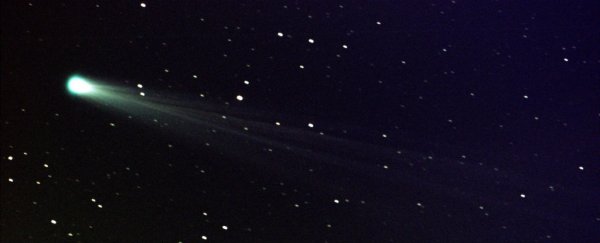A team of astronomers has identified giant comets as a greater threat to life on Earth than asteroids. The biggest difference between the two celestial bodies is their composition: comets are composed of ice, dust, and rock, whereas asteroids are made up of metals and rock - which is why comets leave a 'tail', as the ice within them gets vapourised by the Sun.
That distinction might not mean much to the average resident of planet Earth, but another major difference between comets and asteroids is where they can be found in the Universe. Giant comets, known as centaurs (around 50-100 km or 31-62 miles across), move through unstable orbits that take them past the larger planets: Jupiter, Saturn, Uranus, and Neptune.
The gravity from these planets can deflect comets in the direction of Earth, and we're discovering more and more of these centaurs as time goes on.
Researchers from Armagh Observatory and the University of Buckingham in the UK think this makes them a genuine threat to our home planet - more so than the asteroids that typically come closer to Earth on a regular basis, and which have been the main focus of NASA's investigations so far.
If a centaur heading in our direction should break up into pieces, we could face an intermittent bombardment of missiles that lasts 100,000 years, according to the new report.
"In the last three decades we have invested a lot of effort in tracking and analysing the risk of a collision between Earth and an asteroid," said one of the team, astronaut Bill Napier. "Our work suggests we need to look beyond our immediate neighbourhood too, and look out beyond the orbit of Jupiter to find centaurs. If we are right, then these distant comets could be a serious hazard, and it's time to understand them better."
Based on a study of ancient civilisations, the terrestrial environment and interplanetary matter close to Earth, the scientists think the remnants of a centaur may have hit our planet some 30,000 years ago. Based on a projected frequency of one centaur per 40,000 to 100,000 years, that means we're almost due for another one.
The cratering patterns found on Earth and the Moon suggest the volume of near-Earth objects (NEOs) is episodic in nature, say the researchers. In other words, it varies significantly over time, and we should be prepared for another sudden increase in the number and frequency of the NEOs we potentially have to deal with. Perhaps the sooner we all vacate the planet, the better.
The study has been published in the journal Astronomy & Geophysics.
